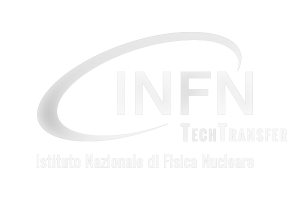BEAMIDE is an innovative spin-off of INFN (Italian National Institute for Nuclear Physics) with core business of radiation hardness assurance services tests and software & innovative radiation detectors R&D.
MRADSIM has been selected as a pilot project by European Open Science Cloud (This work is co-funded by the EOSC Future project under the European Union Horizon Programme call INFRAEOSC-03-2020 – ![]() Project ID 101017536.)
Project ID 101017536.)
One of BEAMIDE’s ongoing projects is MRADSIME, which stands for Matter RADiation interactions SIMulations and Innovative radiation detector development. The pilot is about developing a software set to simulate the radiation effects on electronic and electro-mechanical systems/subsystems (DUT) and to improve the data analysis and reconstruction capabilities of the simulation software MRADSIM and of two innovative radiation detectors.
In doing that, BEAMIDE utilizes the power of open-source GEANT4 package developed for high energy physics experiments (i.e., at CERN or space-borne experiments as AMS on ISS) for particle transportation from radiation source to the DUT.
MRADSIM is a cross-platform system that uses OpenCascade, Qt5, CMake, and other tools to provide a user-friendly interface for simulations.
The same kind of support is of great interest also for our innovative radiation detectors R&D group. In particular, our two detection systems, which are at TRL=4, are a personal portable active dosimeters system (PDOZ) and a gamma camera (GamCam) system for health and material search applications using image reconstruction and XRF method, respectively.
MRADSIM needs CPU, GPU, disk space, but in particular training on how to implement algorithms for combined CPU and GPU usage and optimization, to be able to simulate a very large number of radiation events (e.g. 10^16 particles through a big GEO satellite over 20 years of activity). Alternatively, we may think to use AI and ML techniques to run a lesser number of events while approaching the same result accuracy as in a full run case.
To address this challenge, BEAMIDE has developed a work plan that includes various milestones.
T1: Define the needs of BEAMIDE and create a schedule for implementation.
T2: Familiarize with experts of GPU and AI/ML and acquire documentation from EOSC site.
T3: Develop solutions for GPU computing to improve simulation time for a large number of events.
T4: Develop solutions for AI/ML application of GamCam data and possibly PDOZ/GamCam data.
T5: Benchmark developed solutions and compare with best solution available on the market.
T6: Conclude the project and present results to a larger audience.
By improving the simulation software MRADSIM and developing innovative radiation detectors, BEAMIDE aims to advance the field of radiation hardness assurance services tests and software. With the implementation of GPU computing and AI/ML techniques, MRADSIM will be able to simulate large numbers of radiation events more efficiently and accurately, while the innovative radiation detectors will provide better data for health and material search applications.
Source: https://lnkd.in/e-m6cyVB
